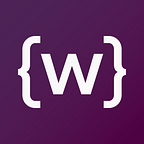A Glimpse into Remote CS Internships
What does an internship look like in the COVID era? We asked Jessica Yu, a current sophomore studying computer science, to share her experience from last summer as a remote SWE intern.
1. Tell us about your remote internship.
Last summer, I worked at Infosys, an Indian multinational corporation that provides business consulting, information technology and outsourcing services. I interned remotely as a part of their global Instep Internship program for 8 weeks, during which I generally followed an 8 hour workday schedule (although the exact structure definitely varied day to day due to the time difference and the virtual format).
When I joined Instep, I was placed with a mentor and team in Infosys’ Strategic Technologies Group (STG). This group was dedicated to driving the innovation, architecture and crafting of software code for large platforms across the company and its subsidiaries, helping streamline the process of building, coordinating, and strategizing to create best in breed software.
2. What kind of projects did you work on during your internship?
My mentor assigned me to work on one of the team’s ongoing projects, which involved developing a system to streamline remote hiring and onboarding for one of Infosys’ clients. I was primarily responsible for designing the user flow and implementing the frontend of this software. Throughout the first half of my internship, I researched the hundreds of different processes used by different companies and countries to design a streamlined workflow for users from various backgrounds and geographies. After getting my design approved, I began implementing the frontend framework using Angular. Throughout this process, I received guidance from my mentor via weekly check-in meetings and connected with the other members of the team to ensure my work was aligned with theirs.
Overall, I learned a lot from the experience and enjoyed having the opportunity to work on a real-world, timely challenge that would be integrated into Infosys’ software. I’m incredibly grateful for all the support I received from my mentor, my team, and the Instep coordinators!
3. How did the remote aspect impact your internship experience?
My internship was initially supposed to take place in India (Bengaluru), so the remote aspect obviously made my experience quite different than usual. Going into the internship, my primary concern was the challenge posed by the 9+ hour time difference between the US west coast and India. In the end, I think things worked out well: aside from a few odd-hour meetings, we were able to strategically use multimedia remote communication to stay connected and collaborate effectively. Since Instep is a global program, there were also plenty of other interns in similar time zones as me, so I was able to talk with them during the workday to feel connected and motivated.
4. Do you think your internship would have been more effective if it had been in person?
One of the major benefits that Infosys promotes about its Instep program is the opportunity to travel abroad, explore a different culture, and connect with students from around the globe. Unfortunately, we did not get to experience the travel part of the internship, which had definitely been something I was looking forward to — and still hope to do in the future. However, the Instep coordinators did an amazing job of shifting team-building and cultural exploration to a remote format, holding weekly cultural workshops, coffee chats, and talks — we got to hear from a wide variety of industry leaders, including Infosys’ founder, NR Narayana Murthy. I’m grateful as to how readily Infosys adapted to this virtual format: I learned a ton through the weekly events and still got to bond plenty of Insteppers in our calls!
5. Do you see any unique benefits to remote work/internships?
There are certainly benefits to interning remotely, and I think the primary benefit is the flexibility that comes with virtual work. In a remote internship, you have a lot more control over how you manage your time from day to day, so you can plan your work around your own schedule. This means that you potentially have the time to explore more opportunities than you would otherwise — for example, taking a class or working another part time job!
6. Do you have any advice for college students hoping to get a tech internship next summer?
The tech recruiting process can be super nerve wracking — my main advice would be to keep your eyes peeled and your mind open. I started looking for an internship quite late (in the winter), and I thought there would be no opportunities left by then. But it turns out that there are plenty of opportunities in tech all throughout the year: in addition to searching for opportunities in industry, I would also highly recommend exploring Stanford specific programs like Cardinal Quarter Fellowships, CURIS, and the Global Engineering Program (which is the program that matched me with Infosys!) Best of luck to everyone — you got this!
